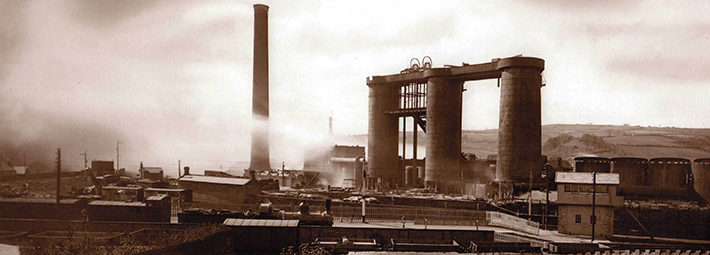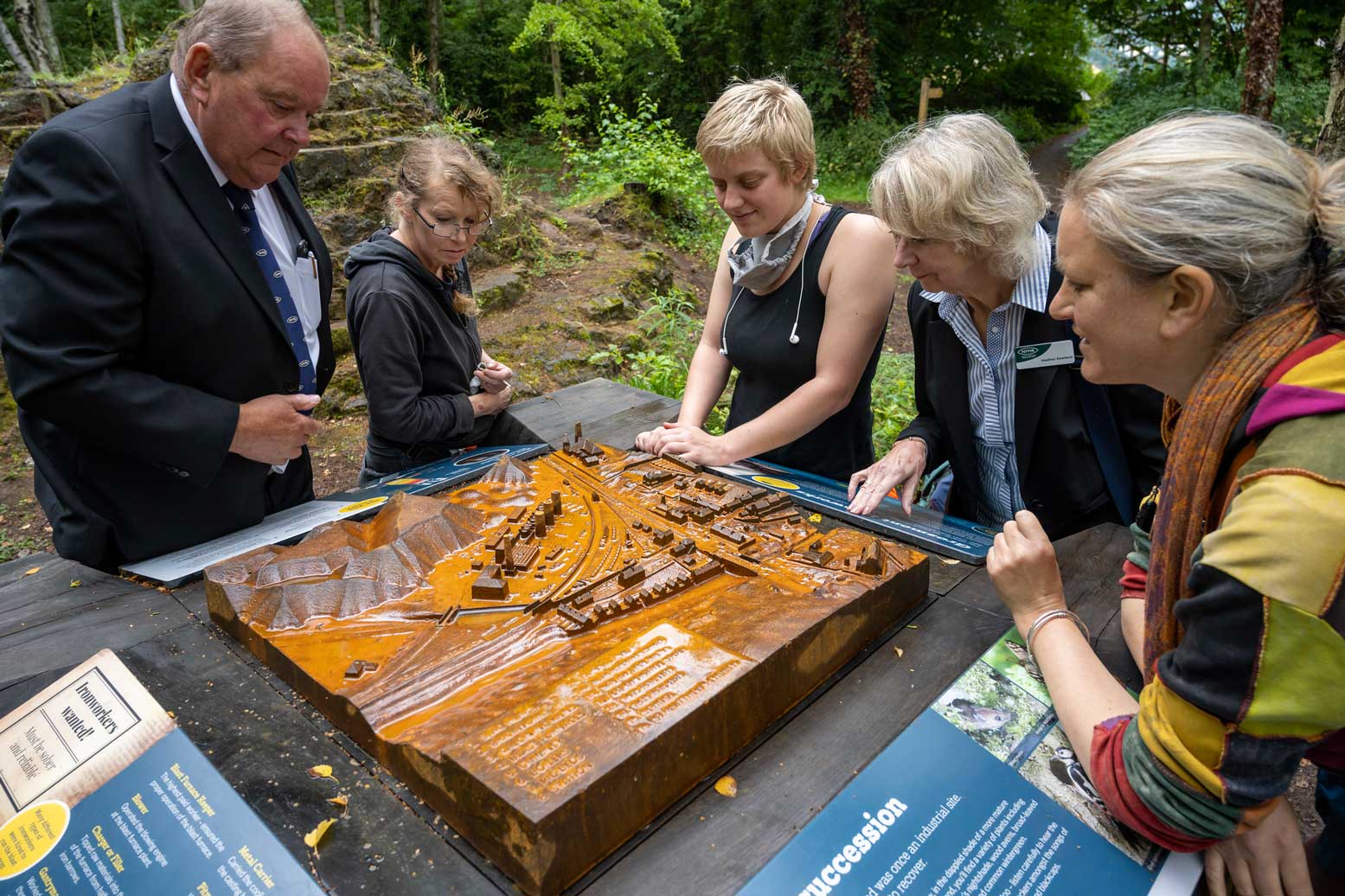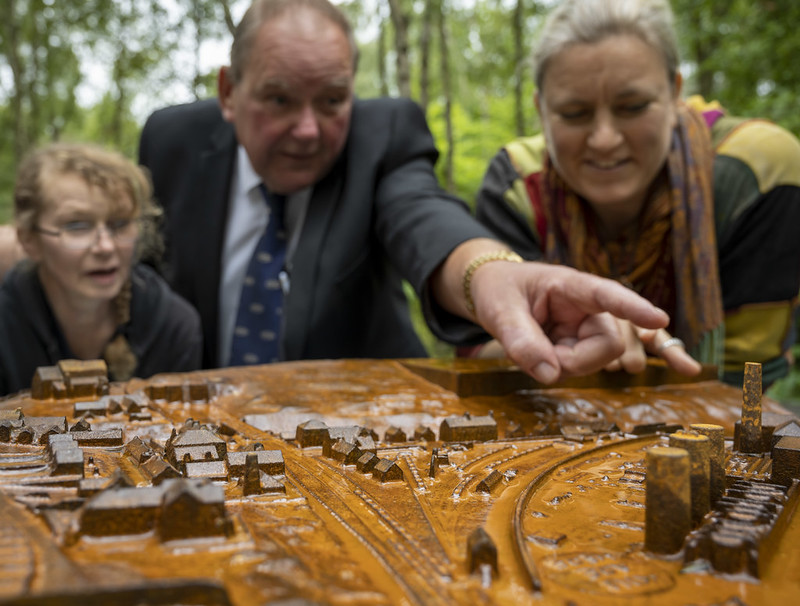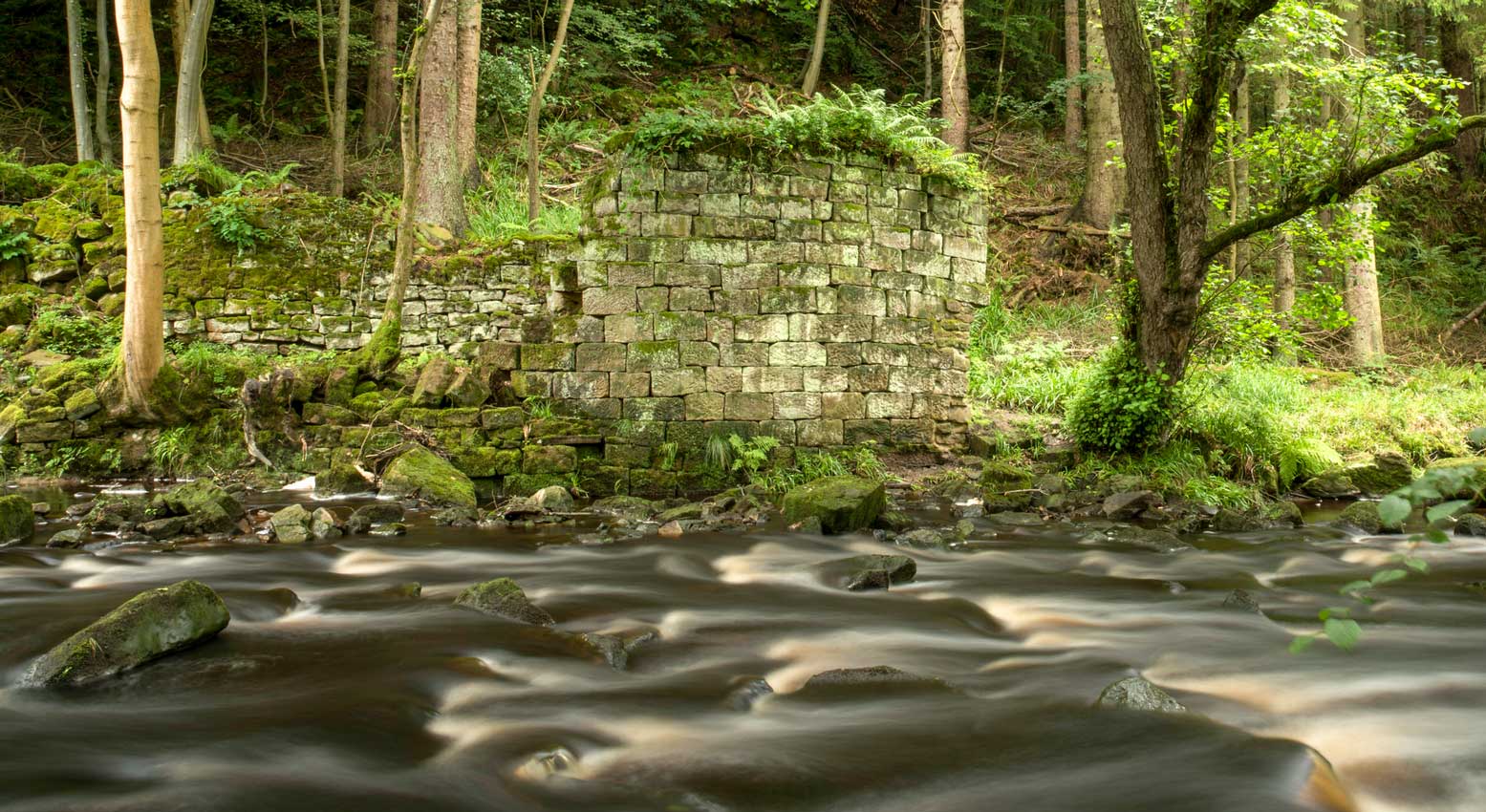Grosmont Ironworks
The green and leafy National Park car park in Grosmont was once the site of Grosmont Ironworks – a major industrial complex producing nearly 1,000 tonnes of pig iron a week. Many ironstone mines surrounded the site to feed the 3 furnaces, 24 hours a day, 7 days a week. A nearby brickworks also operated between 1870 and 1957, producing thousands of quality bricks and many beautiful handcrafted ‘specials’.

The piles of slag and waste that the ironworks produced were enormous, estimated at around 1 million tonnes, and blighted this now-picturesque village for a long time. Although the furnaces ceased operation in 1891 it took another 50 years for all the slag to be removed, much of it recycled for use in road building. The ground conditions left from the industrial exploitation have helped encourage a variety of unusual and attractive plants to colonise the site, such as twayblade and sickle medick.
Lumps and bumps in the car park indicate the layout of the ironworks – the base of one of the blast furnaces and the boiler house chimney can be clearly seen. The project has conserved and protected these features, helping to uncover new ones through community archaeology events, and helped tell the story of this fascinating site, its history and how nature has steadily reclaimed the space.


Esk Valley Mine
Hidden at the edge of a field alongside the Grosmont-Goathland Rail Trail is the site of Esk Valley mine, also known as Holme House Mine. This relatively small scale operation is a good example of a Victorian vision to create a self-sustaining community around an industrial facility. Two terraces of miners' cottages, a mine manager’s house, small chapel and group of craftsmen’s houses can all still be seen today.
Unlike many ironstone mines which were drift mines (worked horizontally in from a hillside), Esk Valley was a deep mine where a shaft was dug 60m straight down to the ironstone seam and the ore hauled up using a steam engine. The remains of the engine base and boiler supports can still be seen alongside the mine shaft.
The project has made the site safe with a metal grill placed over the shaft and repairs to the stonework surround. A new path from the Rail Trail has been installed to enable public access to this site for the first time, which is open from 31 August 2020. Interpretation, including a fantastic sculpture created by a local artist, is helping to tell the story of the mine, its workings, and the community that was built around it.
Beck Hole Ironworks
Further along the Rail Trail towards Goathland in fields alongside the track lies the site of Beck Hole Ironworks and mines, opened in 1859. In the peace and tranquillity of Beck Hole today it can be hard to imagine the fire, smoke and noise of the industry. Despite grand ambitions highlighted in the Whitby Gazette of 1860, the mining here was short-lived with the workings and associated cottages demolished within 30 years of being built.

The Rail Trail is a 3½ mile walk from Goathland to Grosmont following the route of George Stephenson’s original railway line of 1836. It can be combined with a trip on the steam trains of the North Yorkshire Moors Railway between Grosmont and Goathland to complete the loop.
The project carried out surveys of the original railway bridges that now carry the Rail Trail to detail future conservation work needed to maintain this popular walking route. It has also provided interpretation along the route of the mining and industrial heritage features that can be found, including Goathland incline that once hauled goods and passengers up the 1 in 15 gradient using a system of gravity-fed water tankers on ropes and cables.
Buy the Rail Trail guidebook from local outlets to get the most from the walk.
